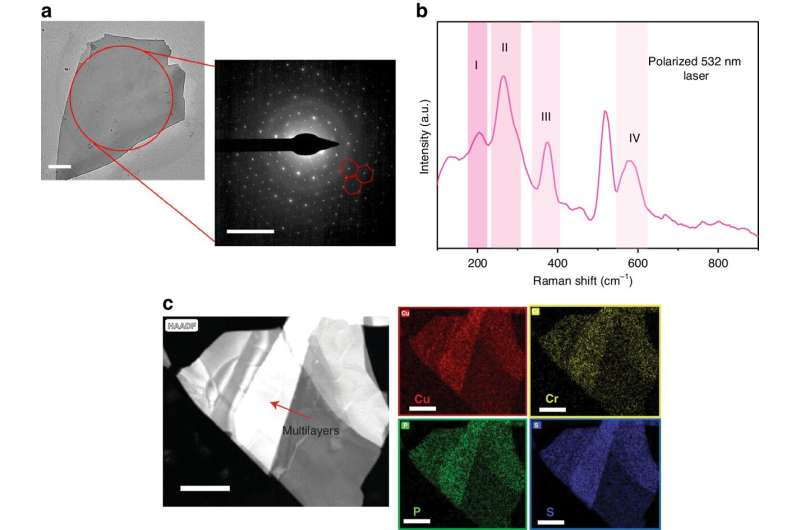Structural characteristics of CCPS. Credit: Light: Science and Applications (2024). DOI: 10.1038/s41377-024-01432-2
To meet the growing need for efficient, tunable optical materials that can precisely modulate light to create wider bandwidths in communications networks and advanced optical systems, a team of researchers at NYU Abu Dhabi’s Photonics Research Laboratory (PRL) Researchers have developed a novel two-dimensional (2D) material capable of manipulating light with remarkable precision and minimal loss.
Tunable optical materials (TOMs) are revolutionizing modern optoelectronics, electronic devices that detect, generate and control light. In integrated photonic circuits, precise control of the optical properties of materials is critical to unlocking breakthrough and diverse applications for light manipulation.
Two-dimensional materials such as transition metal dichalcogenides (TMDs) and graphene exhibit significant optical responses to external stimuli. However, achieving unique modulation in the shortwave infrared (SWIR) region while maintaining precise phase control with low signal loss in a compact footprint has been an ongoing challenge.
In a new paper titled “Electro-optical tuning in composite silicon photonics based on iron-ion 2D materials,” published in Light: Science and ApplicationsA team of scientists led by Ghada Dushaq, research scientist, and Mahmoud Rasras, associate professor of electrical engineering and director of the PRL Laboratory, demonstrated a new approach to active light manipulation by utilizing the iron-ion two-dimensional material CuCrP.2S6 (CCPS).
By integrating a first-of-its-kind two-dimensional atomically thin material into tiny ring-shaped structures on a silicon wafer, the team improved the efficiency and compactness of the device.
When integrated into silicon optical components, these 2D materials demonstrate the remarkable ability to fine-tune the optical properties of transmitted signals without any attenuation. This technology has the potential to revolutionize environmental sensing, optical imaging and neuromorphic computing, where light sensitivity is key.
“This innovation provides precise control of the refractive index while minimizing optical losses, improving modulation efficiency, and reducing footprint, making it suitable for next-generation optoelectronic devices,” said Rasras.
“There are an exciting range of potential applications, from phased arrays and optical switches to environmental sensing and metrology, optical imaging systems, and neuromorphic systems in light-sensitive artificial synapses.”
More information:
Ghada Dushaq et al., Electro-optical tuning in composite silicon photonics based on iron-ion 2D materials, Light: Science and Applications (2024). DOI: 10.1038/s41377-024-01432-2
Provided by New York University
citation: New 2D material manipulates light with extraordinary precision and minimal losses (2024, April 22), Retrieved April 22, 2024, from https://phys.org/news/2024-04-2d-material- remarkable-precision-minimal.html
This document is protected by copyright. No part may be reproduced without written permission except in the interests of fair dealing for private study or research purposes. Content is for reference only.
#material #manipulates #light #extreme #precision #minimal #loss
Image Source : phys.org
